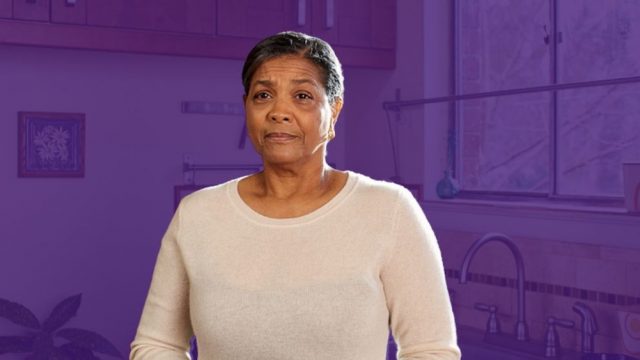
Despite historic Medicare reforms, charitable assistance programs still critical for many
A recent analysis conducted by Avalere Health—sponsored by the PAN Foundation—projects more than 2.6 million non-low-income subsidy Medicare Part D beneficiaries will have out-of-pocket spending high enough to reach the new $2,000 annual out-of-pocket cap on prescription medications in 2025, the year it goes into effect.
In addition, about 800,000 beneficiaries in 2024 and more than 200,000 beneficiaries in 2025 will spend more than 10 percent of their income on prescription medications each year. This analysis follows national polling which found about 75 percent of adults surveyed would find it difficult to afford $2,000 in out-of-pocket prescription costs.
The analysis aimed to examine the impact historic Medicare Part D reforms enacted under the 2022 Inflation Reduction Act may have on patient affordability.
In addition to the $2,000 out-of-pocket cap, the report also explored the potential impact in 2024 of the elimination of the five percent coinsurance in the catastrophic phase and starting in 2025, the option to pay out-of-pocket costs monthly, smoothing the financial burden throughout the year. Other key findings from the analysis include:
2024
- It is projected that 1.5 million non-low-income subsidy beneficiaries will have out-of-pocket spending high enough to reach the cap at the new catastrophic threshold, with 18 percent of them reaching it in the first three months of the year.
- Greater shares of those who qualify for Medicare based on disability (24 percent) and beneficiaries who are Hispanic (26 percent) or Black (23 percent) are expected to reach catastrophic in the first three months of the year when compared to the average across all non-low-income subsidy enrollees who reach catastrophic (17 percent).
- Since the out-of-pocket smoothing reform will not yet be implemented, those beneficiaries expected to reach the new catastrophic threshold early in the year may face affordability challenges due to incurring high out-of-pocket costs in a short period of time.
- Almost 800,000 non-low-income beneficiaries are projected to have out-of-pocket costs representing more than 10 percent of their annual income. Eight in ten of these beneficiaries have annual incomes between 150 and 300 percent of the federal poverty level, which is just above the low-income subsidy threshold.
2025
- Of the roughly 4.2 million non-low-income subsidy beneficiaries projected to have greater than $1,500 in out-of-pocket spending in 2025, around 20,000 beneficiaries are projected to have large out-of-pocket spending (i.e., more than $1,250) in the last three months of the year.
- Greater shares of Hispanic (1.4 percent), Black (0.9 percent), and Asian (0.7 percent) beneficiaries are projected to incur the majority of their out-of-pocket costs in the last three months of the year when compared to all non-low-income subsidy beneficiaries who are projected to have out-of-pocket spending of more than $1,500 (0.4 percent).
- Given that most of their out-of-pocket spending comes toward the end of the year, certain populations—including Hispanic, Black, and Asian beneficiaries—may experience limited benefit from the out-of-pocket smoothing reform.
- More than 200,000 beneficiaries are projected to have out-of-pocket costs representing more than 10 percent of their annual income.
Therapeutic areas
- In both 2024 and 2025, the highest number of non-low-income subsidy beneficiaries who are projected to reach the out-of-pocket cap include those taking asthma drugs, blood thinners, immunology therapies, cancer therapies, and HIV drugs.
- Although diabetes drugs were also a top therapeutic area for beneficiaries projected to reach the out-of-pocket cap in 2024 and 2025, the analysis did not account for the new $35 per month out-of-pocket cap on insulin that goes into effect in 2023.
This analysis reinforces the fact that the PAN Foundation’s charitable assistance program continues to serve a critical role moving forward.
“While we remain grateful for the important Medicare reforms included in the Inflation Reduction Act, we are reminded once again that many beneficiaries will continue to face real challenges affording their out-of-pocket prescription costs—all while juggling other healthcare and living expenses,” said Kevin L. Hagan, President and CEO of the PAN Foundation. “This analysis reinforces the fact that the PAN Foundation’s charitable assistance program continues to serve a critical role moving forward. We must also keep prioritizing equitable health outcomes for those who have been historically marginalized and addressing the disproportionate impact high out-of-pocket costs are having on these communities.”
Far too often, high out-of-pocket costs lead individuals facing life-threatening, chronic, and rare diseases to delay or go without their prescribed medications. By partnering with generous donors, healthcare providers, and pharmacies across the country, PAN provides thousands of underinsured patients each year with access to the essential medications and treatments they need to manage their health conditions and focus on improving their quality of life.
In addition to providing charitable assistance for out-of-pocket costs, PAN also remains committed to advocating for improved healthcare access and affordability for everyone—so that all people can live the life they deserve. This commitment includes improving health equity by addressing disparities in healthcare and health outcomes due to long-standing, systemic racism and discrimination. Learn more about PAN’s advocacy efforts and position statements.
Further resources
About the PAN Foundation
The PAN Foundation is an independent, national 501 (c)(3) organization dedicated to helping federally and commercially insured people living with life-threatening, chronic, and rare diseases with the out-of-pocket costs for their prescribed medications.
Since 2004, we have provided more than 1 million underinsured patients with $4 billion in financial assistance. Partnering with generous donors, healthcare providers and pharmacies, we provide the underinsured population access to the healthcare treatments they need to best manage their conditions and focus on improving their quality of life. Learn more at panfoundation.org.